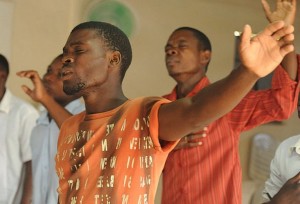- SMALL GROUP MINISTRY (part 1)
- SMALL GROUP MINISTRY (part 2)
SMALL GROUP MINISTRY
TASKS OF A SMALL GROUP LEADER
-
Faithful in prayer
-
To Prepare in Advance
-physical arrangements
-available resources (i.e., Bible)
-format of the meeting: a plan
-strategy for the use of time -
To Guide the Group during the meeting
-intervening when needed
-maintaining time schedule (generally) -
Ministry of Care
-projection of personal warmth
-keeping the group from passing judgment
-being a model servant for the group "a facilitating, enabling servant leader"
FOUR STYLES OF LEADERSHIP
1. Autocratic – "Tell"
- total control
- leader announces contract
- asks and answers all questions
2. Authoritative – "Sell"
- strong control with members actively involved
- definite purpose but open to modification
- prepared to give direction
- prepares and asks questions: members respond and discuss
3. Democratic – "Participate"
- group centered – egalitarian
- shares leadership responsibility
- shared control with leader and members sharing functions and decisions
4. Laissez-Faire – "Delegate"
- permissive – passive
- minimal control
- doesn't prepare and lets things drift
- asks vague or general questions
PATTERNS OF LEADERSHIP
*There are a variety of patterns which can be used to conduct a meeting:
1. One leader for every session
- most common pattern with a leader serving for a pre-determined length (i.e., 8-10 weeks)
- the continuity of one leader helps the group to develop because everyone becomes familiar with a particular style
2. Partnership Pattern Leadership
Two or three people act as group leaders and share various tasks
week by week. The leadership can be rotated on a weekly basis or
each meeting can be sub-divided into several components with each
leader assisting in some capacity.
3. Rotating Leadership
In this pattern, each member of the group takes a turn at leading.
No one person is burdened with this responsibility, but unless the
participants are experienced, the group can lose its direction and
productivity.
